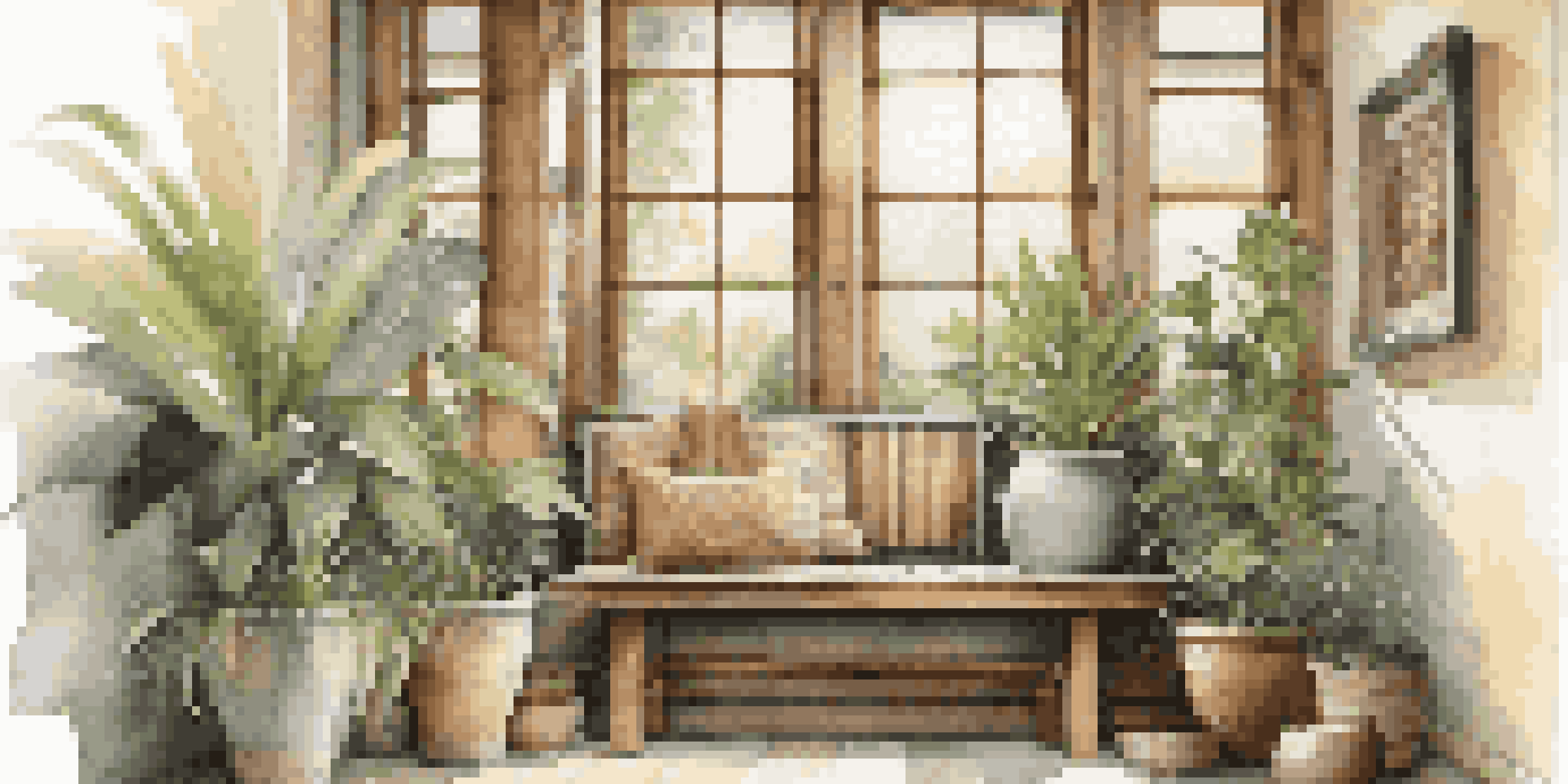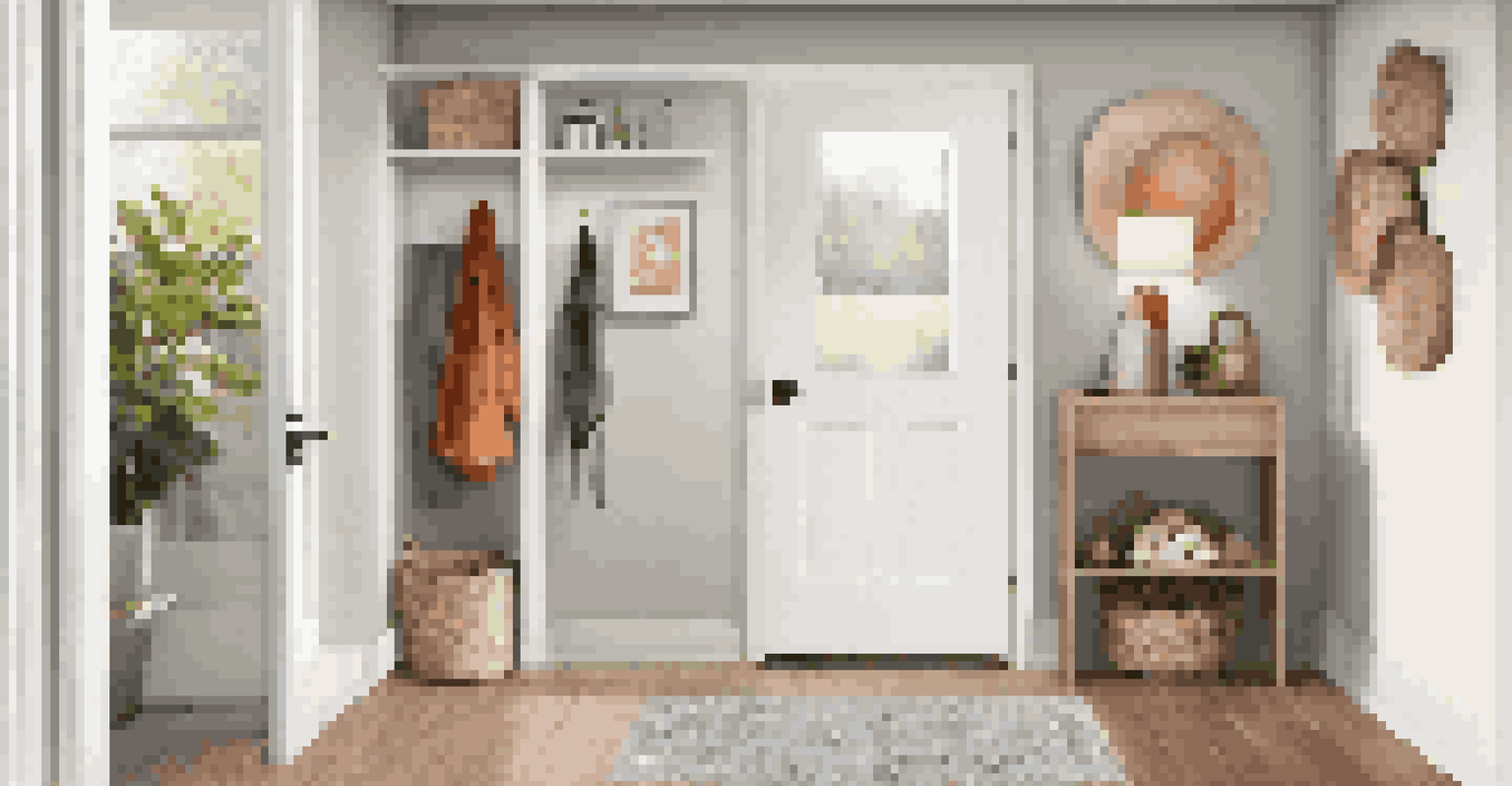Choosing Sustainable Materials for Eco-Friendly Entryways

Understanding the Importance of Sustainable Materials
Sustainable materials are crucial for reducing our environmental impact. They help in conserving natural resources and minimizing waste, which is essential in today's world. By choosing eco-friendly options for your entryway, you contribute to a healthier planet while creating a welcoming space.
The greatest threat to our planet is the belief that someone else will save it.
Think of sustainable materials as the building blocks of an eco-conscious lifestyle. Just like choosing organic food can enhance your well-being, selecting these materials can elevate your home’s aesthetic while being kind to the Earth. Every small choice counts, and it adds up to a significant change.
Moreover, sustainable materials often come with the added benefit of durability. Investing in high-quality, eco-friendly options means your entryway will not only look great but also stand the test of time, making it a wise financial decision in the long run.
Identifying Eco-Friendly Material Options
When it comes to entryways, various sustainable materials are available to choose from. Bamboo, reclaimed wood, and recycled metal are excellent choices that blend durability with style. Each of these materials tells a story of sustainability and creativity, adding character to your entryway.

For instance, bamboo grows rapidly and can be harvested without damaging the ecosystem. Reclaimed wood, on the other hand, breathes new life into old materials, making it an eco-friendly option that adds a rustic charm. Understanding these options helps you make informed choices that align with your values.
Choose Sustainable Materials Wisely
Opting for eco-friendly materials like bamboo and reclaimed wood enhances your entryway while supporting a healthier planet.
Additionally, consider materials like natural stone or recycled glass. These materials not only look stunning but also come with a lower environmental footprint. By incorporating them into your entryway design, you can create a space that’s both beautiful and kind to the planet.
The Role of Local Sourcing in Sustainability
Sourcing materials locally is a fantastic way to enhance sustainability. When you buy local, you're reducing the carbon footprint associated with transportation, which is a significant contributor to environmental degradation. Plus, you support local businesses and communities, fostering an economy that values sustainability.
Sustainability is no longer about doing less harm. It's about doing more good.
Imagine walking into your entryway, knowing the materials were sourced just down the road. It adds a personal touch and a sense of connection to your community. By supporting local artisans and suppliers, you also encourage the use of sustainable practices in your area.
Many local suppliers offer eco-friendly options that are unique and have a story to tell. This not only elevates your entryway design but also promotes a culture of sustainability in your community, inspiring others to make similar choices.
Choosing Low-VOC and Non-Toxic Finishes
Volatile Organic Compounds (VOCs) are chemicals found in many common finishes that can harm indoor air quality. Opting for low-VOC or non-toxic finishes for your entryway can significantly enhance the healthiness of your home environment. This choice is particularly important in areas with high foot traffic, as they often accumulate dust and pollutants.
Imagine entering your home and being greeted by fresh air instead of lingering chemical smells. Low-VOC finishes provide that peace of mind, ensuring you and your family breathe cleaner air. It's a simple yet effective way to create a healthier living space.
Support Local Sourcing for Impact
Sourcing materials locally reduces transportation emissions and fosters community ties, promoting sustainability in your area.
Additionally, these eco-friendly finishes often maintain the aesthetic appeal, allowing you to achieve the look you desire without compromising your health. From paints to sealants, there are plenty of options that cater to both beauty and sustainability.
Incorporating Natural Elements into Your Entryway
Natural elements like plants, stones, and wood can significantly enhance the sustainability of your entryway. Incorporating live plants not only beautifies the space but also improves air quality and brings a sense of tranquility. Think of your entryway as a transition space that sets the tone for your home.
Adding elements such as a stone floor or wooden bench can create a warm and inviting atmosphere. These materials connect your indoor space with the outdoors, reminding you of nature's beauty. It’s like bringing a piece of the environment inside, fostering a deeper connection to the world around you.
Moreover, the use of natural elements often requires less processing and fewer chemicals, making them a healthier choice. This simple integration can transform your entryway into a serene retreat while promoting sustainable living.
Designing for Functionality and Sustainability
An eco-friendly entryway isn't just about the materials; it’s also about functionality. Consider how the design can accommodate everyday activities, such as storing shoes or coats. By creating a well-organized space, you can reduce clutter and maintain a clean environment, which is essential for sustainability.
For instance, incorporating built-in storage solutions made from sustainable materials can help keep your entryway tidy. A well-thought-out design minimizes the need for additional furniture, which can often be made from less sustainable sources. This approach allows you to maximize both form and function in your entryway.
Prioritize Low-VOC Finishes
Selecting low-VOC and non-toxic finishes improves indoor air quality, creating a healthier home environment.
Ultimately, a functional design serves a dual purpose: it enhances your daily life while embodying your commitment to sustainability. This balance is key to creating a welcoming, eco-friendly space that reflects your values.
Maintaining Your Sustainable Entryway
Once you’ve created your eco-friendly entryway, it’s important to maintain it properly. Using non-toxic cleaning products helps preserve your sustainable materials while keeping the area clean. Regular maintenance not only extends the life of your materials but also ensures a healthy environment for you and your family.
Think of maintaining your entryway like caring for a garden; a little attention goes a long way. Simple tasks like dusting, wiping down surfaces, and checking for wear can prevent bigger issues down the road. This proactive approach is essential in sustaining your eco-friendly choices.

Additionally, consider seasonal updates to refresh the space. Rotating decor or changing out plants can keep your entryway lively and engaging while reinforcing your commitment to sustainability. It’s all about creating an inviting atmosphere that reflects your values and lifestyle.